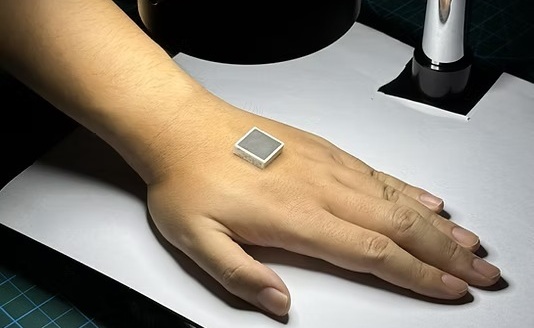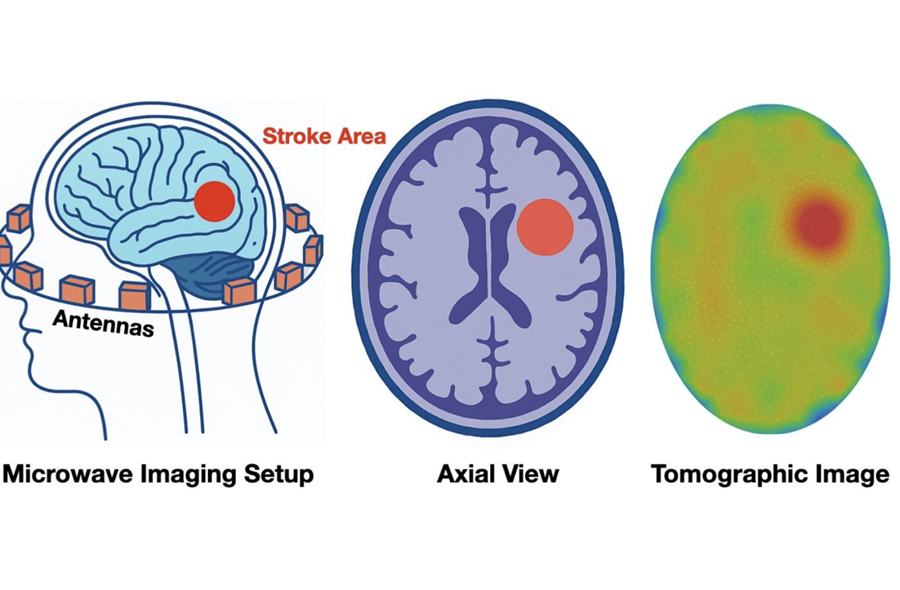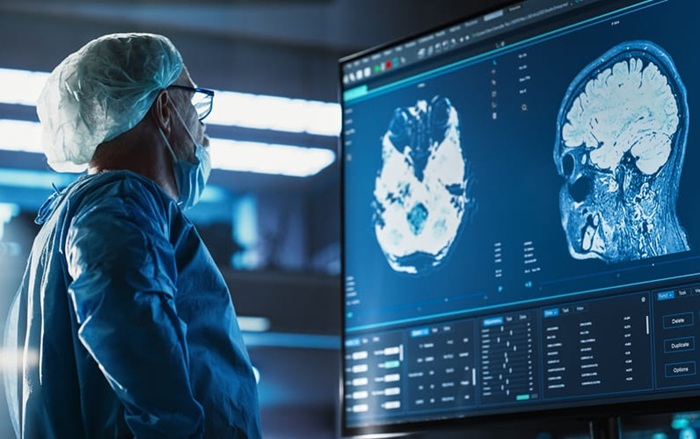Registration Opens for RSNA 2022
|
By MedImaging International staff writers Posted on 25 Jul 2022 |

Registration is now open for the Radiological Society of North America’s (RSNA, Oak Brook, IL, USA) 108th Scientific Assembly and Annual Meeting, the world’s largest annual radiology forum, to be held at McCormick Place Chicago, Nov. 27 – Dec. 1, 2022.
RSNA 2022: Empowering Patients and Partners in Care illustrates the dynamic role imaging plays in disease management and multidisciplinary collaboration. The forum will provide attendees an opportunity to examine the critical role radiology plays in enabling teams to deliver better patient care through a wide variety of innovative research and education sessions that highlight timely topics in the field. RSNA 2022 promises to deliver a comprehensive program with a multitude of CME opportunities for radiology professionals from around the world. Popular features like the Image Interpretation Session and Case of the Day will offer dynamic experiences for attendees. Also returning is the rapid-fire “Fast 5”—with topics centering on the meeting theme. The Discovery Theater also returns in 2022 with lively presentations and entertainment.
On Sunday, RSNA President Bruce G. Haffty, M.D. takes the stage to deliver his President’s Address, “Value of Diagnostic Imaging from the Lens of the Patient,” which will explore the patient perspective on medical imaging. Sunday’s opening session also features Elizabeth Morris, M.D., discussing her experience as a breast cancer patient and how it has fueled her desire to ensure that patient care is respectful and responsive to each patient’s preferences, needs and values. On Monday, Pulitzer Prize-winning author Siddhartha Mukherjee, M.D., will share his insights into human health, medicine and science. Later in the day, Mini Pathria, M.D., will moderate the Image Interpretation session, where attendees can join a panel of experts in identifying abnormal findings critical to making accurate diagnoses.
On Tuesday, Reed A. Omary, M.D., will discuss the responsibility of today's radiology professionals to create the best possible experiences for patients, communities and the planet. Also on Tuesday, moderator Amanda Starc, Ph.D., leads an expert panel in an exploration of the latest health care policy developments and their impact on the field of medical imaging in “Medicare and U.S. Healthcare Policy: A National Conversation.” Wednesday morning offers a lively, team-based game show session, while Wednesday afternoon convenes an expert panel moderated by Quynh-Thu Le, M.D., to discuss the use of machine learning for risk stratification in radiation oncology and optimizing radiation therapy workflows. Thursday’s RSNA/AAPM Symposium will highlight the successful collaboration between radiologists and physicists in technical developments and clinical translations in medical imaging.
As the world’s largest medical imaging conference, RSNA 2022 also provides the ultimate show floor for demonstrating the latest medical imaging technologies in CT, MRI, artificial intelligence (AI), 3D printing, and more. The technical exhibition will once again feature the expansive AI Showcase and Theater, as well as the 3D Printing and Mixed Reality Showcase and the First-time Exhibitor Pavilion. Currently, there are 546 confirmed exhibitors occupying more than 355,000 square feet of exhibit space, including 88 exhibitors occupying over 35,000 square feet in the AI Showcase. RSNA 2022 Virtual Access will feature nearly 100% of all annual meeting programming. Virtual Access is ideal for those who cannot attend, as well as for attendees who wish to maximize their onsite experience. Several registration packages are available, including in-person and virtual access, in-person only, virtual only, and technical exhibits only. In-person registration is free to RSNA members through October 1.
“We are extremely excited about this year’s RSNA meeting in Chicago,” said Dr. Haffty. “The theme of the meeting, ‘Empowering Patients and Partners in Care,’ will strive to raise awareness among our patients and our multidisciplinary partners, regarding the value of radiology to the health of the people in our care.”
“In addition to outstanding plenary speakers focusing on patient-centered care, RSNA 2022 offers a scientific program presenting the latest advances in our field, a portfolio of outstanding educational courses, and expansive exhibit halls that come together to provide a broad range of opportunities for all participants,” Dr. Haffty added. “I look forward to seeing everyone in Chicago.”
Related Links:
RSNA
Latest Industry News News
- GE HealthCare and NVIDIA Collaboration to Reimagine Diagnostic Imaging
- Patient-Specific 3D-Printed Phantoms Transform CT Imaging
- Siemens and Sectra Collaborate on Enhancing Radiology Workflows
- Bracco Diagnostics and ColoWatch Partner to Expand Availability CRC Screening Tests Using Virtual Colonoscopy
- Mindray Partners with TeleRay to Streamline Ultrasound Delivery
- Philips and Medtronic Partner on Stroke Care
- Siemens and Medtronic Enter into Global Partnership for Advancing Spine Care Imaging Technologies
- RSNA 2024 Technical Exhibits to Showcase Latest Advances in Radiology
- Bracco Collaborates with Arrayus on Microbubble-Assisted Focused Ultrasound Therapy for Pancreatic Cancer
- Innovative Collaboration to Enhance Ischemic Stroke Detection and Elevate Standards in Diagnostic Imaging
- RSNA 2024 Registration Opens
- Microsoft collaborates with Leading Academic Medical Systems to Advance AI in Medical Imaging
- GE HealthCare Acquires Intelligent Ultrasound Group’s Clinical Artificial Intelligence Business
- Bayer and Rad AI Collaborate on Expanding Use of Cutting Edge AI Radiology Operational Solutions
- Polish Med-Tech Company BrainScan to Expand Extensively into Foreign Markets
- Hologic Acquires UK-Based Breast Surgical Guidance Company Endomagnetics Ltd.
Channels
Radiography
view channel
AI Detects Early Signs of Aging from Chest X-Rays
Chronological age does not always reflect how fast the body is truly aging, and current biological age tests often rely on DNA-based markers that may miss early organ-level decline. Detecting subtle, age-related... Read more
X-Ray Breakthrough Captures Three Image-Contrast Types in Single Shot
Detecting early-stage cancer or subtle changes deep inside tissues has long challenged conventional X-ray systems, which rely only on how structures absorb radiation. This limitation keeps many microstructural... Read moreMRI
view channel
Novel Imaging Approach to Improve Treatment for Spinal Cord Injuries
Vascular dysfunction in the spinal cord contributes to multiple neurological conditions, including traumatic injuries and degenerative cervical myelopathy, where reduced blood flow can lead to progressive... Read more
AI-Assisted Model Enhances MRI Heart Scans
A cardiac MRI can reveal critical information about the heart’s function and any abnormalities, but traditional scans take 30 to 90 minutes and often suffer from poor image quality due to patient movement.... Read more
AI Model Outperforms Doctors at Identifying Patients Most At-Risk of Cardiac Arrest
Hypertrophic cardiomyopathy is one of the most common inherited heart conditions and a leading cause of sudden cardiac death in young individuals and athletes. While many patients live normal lives, some... Read moreUltrasound
view channel
Wearable Ultrasound Imaging System to Enable Real-Time Disease Monitoring
Chronic conditions such as hypertension and heart failure require close monitoring, yet today’s ultrasound imaging is largely confined to hospitals and short, episodic scans. This reactive model limits... Read more
Ultrasound Technique Visualizes Deep Blood Vessels in 3D Without Contrast Agents
Producing clear 3D images of deep blood vessels has long been difficult without relying on contrast agents, CT scans, or MRI. Standard ultrasound typically provides only 2D cross-sections, limiting clinicians’... Read moreNuclear Medicine
view channel
PET Imaging of Inflammation Predicts Recovery and Guides Therapy After Heart Attack
Acute myocardial infarction can trigger lasting heart damage, yet clinicians still lack reliable tools to identify which patients will regain function and which may develop heart failure.... Read more
Radiotheranostic Approach Detects, Kills and Reprograms Aggressive Cancers
Aggressive cancers such as osteosarcoma and glioblastoma often resist standard therapies, thrive in hostile tumor environments, and recur despite surgery, radiation, or chemotherapy. These tumors also... Read more
New Imaging Solution Improves Survival for Patients with Recurring Prostate Cancer
Detecting recurrent prostate cancer remains one of the most difficult challenges in oncology, as standard imaging methods such as bone scans and CT scans often fail to accurately locate small or early-stage tumors.... Read moreGeneral/Advanced Imaging
view channel
New Algorithm Dramatically Speeds Up Stroke Detection Scans
When patients arrive at emergency rooms with stroke symptoms, clinicians must rapidly determine whether the cause is a blood clot or a brain bleed, as treatment decisions depend on this distinction.... Read more
3D Scanning Approach Enables Ultra-Precise Brain Surgery
Precise navigation is critical in neurosurgery, yet even small alignment errors can affect outcomes when operating deep within the brain. A new 3D surface-scanning approach now provides a radiation-free... Read moreImaging IT
view channel
New Google Cloud Medical Imaging Suite Makes Imaging Healthcare Data More Accessible
Medical imaging is a critical tool used to diagnose patients, and there are billions of medical images scanned globally each year. Imaging data accounts for about 90% of all healthcare data1 and, until... Read more





















